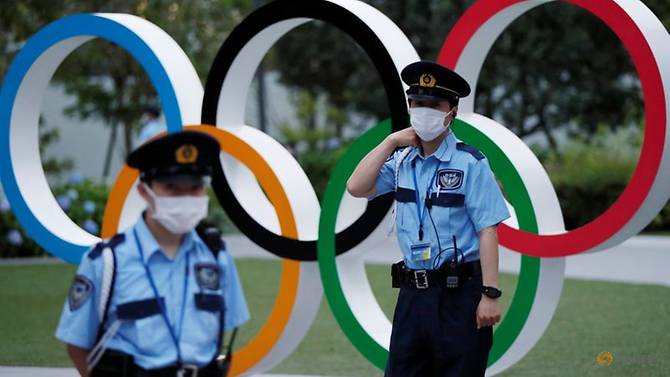Japan is set to outline how it will lift its “state of emergency” curbs while keeping some restrictions, including spectator numbers at big events, amid fears that next month’s Olympics could trigger a new wave of COVID-19 infections.
Media reports say the government is considering allowing up to 10,000 spectators into stadiums during the Games, in line with a plan endorsed by health experts on Wednesday (Jun 16) for local events.
Instead of removing all lockdown measures, the government is seeking to call a “quasi-emergency” in seven of those prefectures, meaning some curbs will remain in place.
The southern island prefecture Okinawa, currently battling a surge in infections, is widely expected to remain in a state of emergency.
The one-notch easing of the emergency restrictions would come just over a month before the Tokyo Olympics, delayed last year because of the COVID-19 pandemic, is due to start on Jul 23.
To avoid a resurgence of the pandemic, Japan, which is due to decide this month on whether to allow domestic spectators at the Games, will likely keep restrictions on the flow of people, including the Olympics.
Health experts including top medical adviser Shigeru Omi on Wednesday agreed with a government plan that would permit up to 10,000 spectators or 50 per cent of a venue’s capacity, whichever is smaller, at events, under certain conditions.
The Mainichi and other media reported the government was aiming to allow spectators into the Games, using the 10,000 cap. A decision on the maximum number of spectators for the Olympics is due by the end of the month.
Polls have shown most Japanese remain wary of the Games, particularly as vaccination rates are still lower than in other wealthy nations.
Omi previously called on the government to better explain to the public how it expects to prevent infections while hosting the Games.
Public broadcaster NHK said on Thursday that Omi and other health experts had compiled proposals for the Games. The proposals will state that banning live spectators will be the least risky way method, and that if spectators are to be allowed, there should be more restrictions than those applied to other large-scale events.

